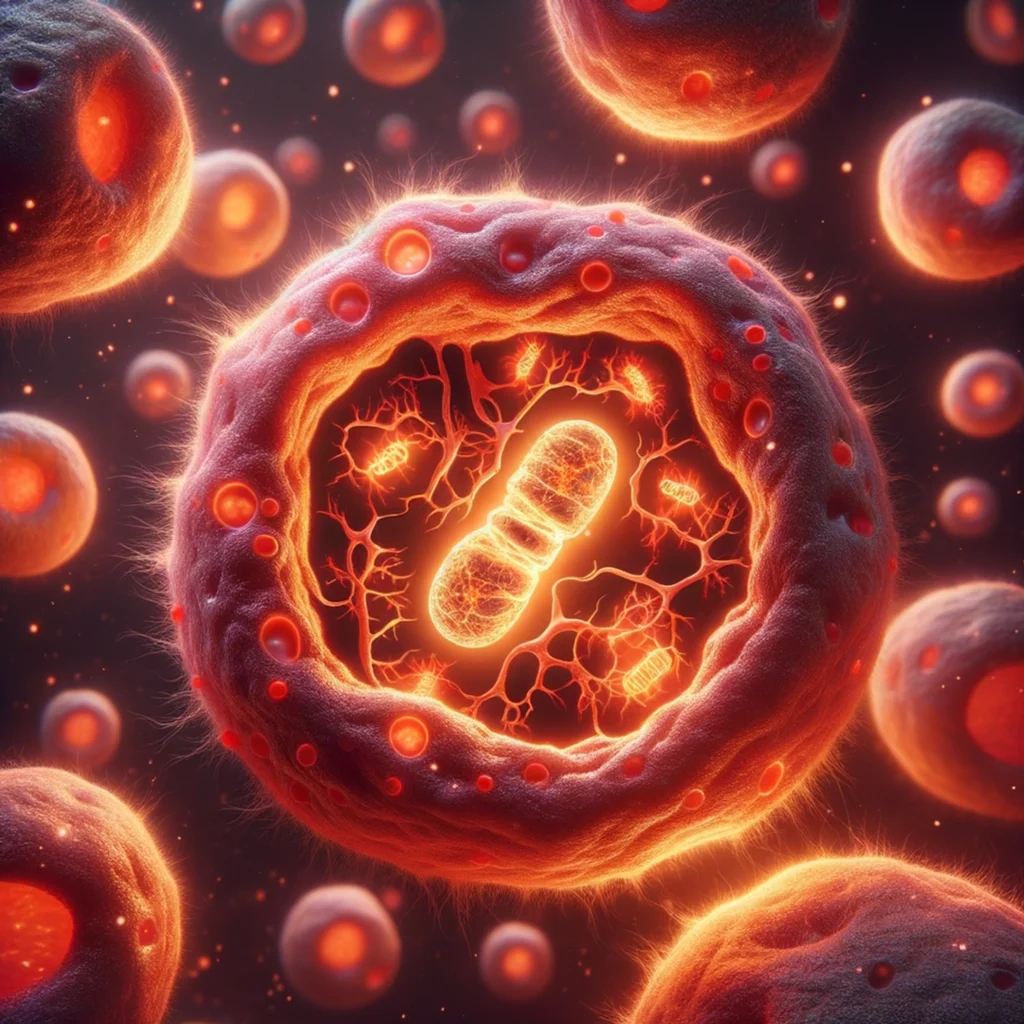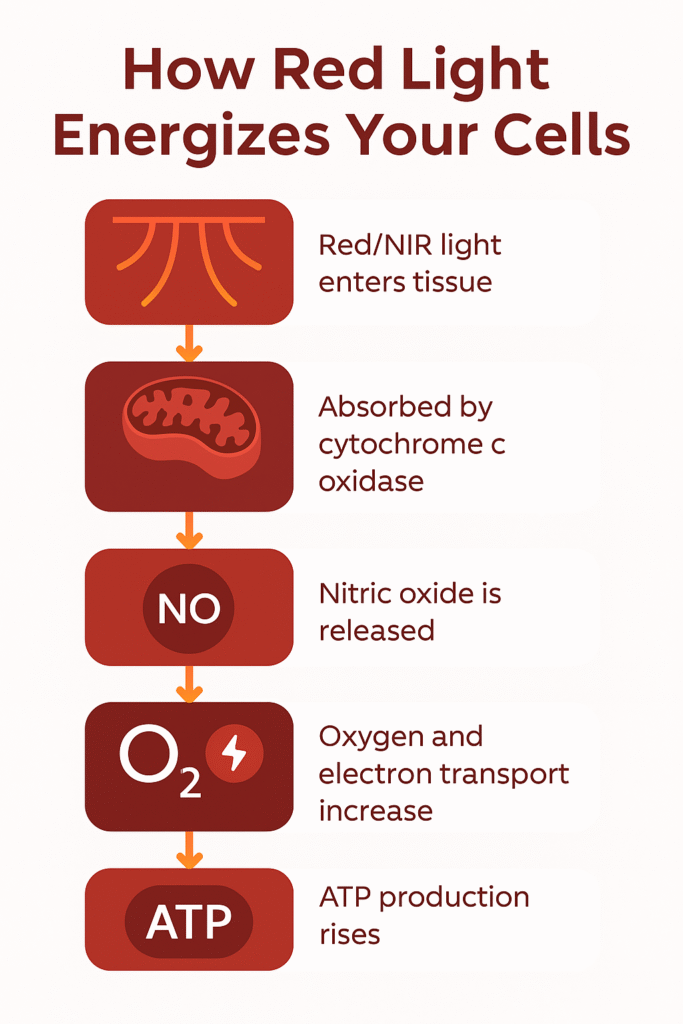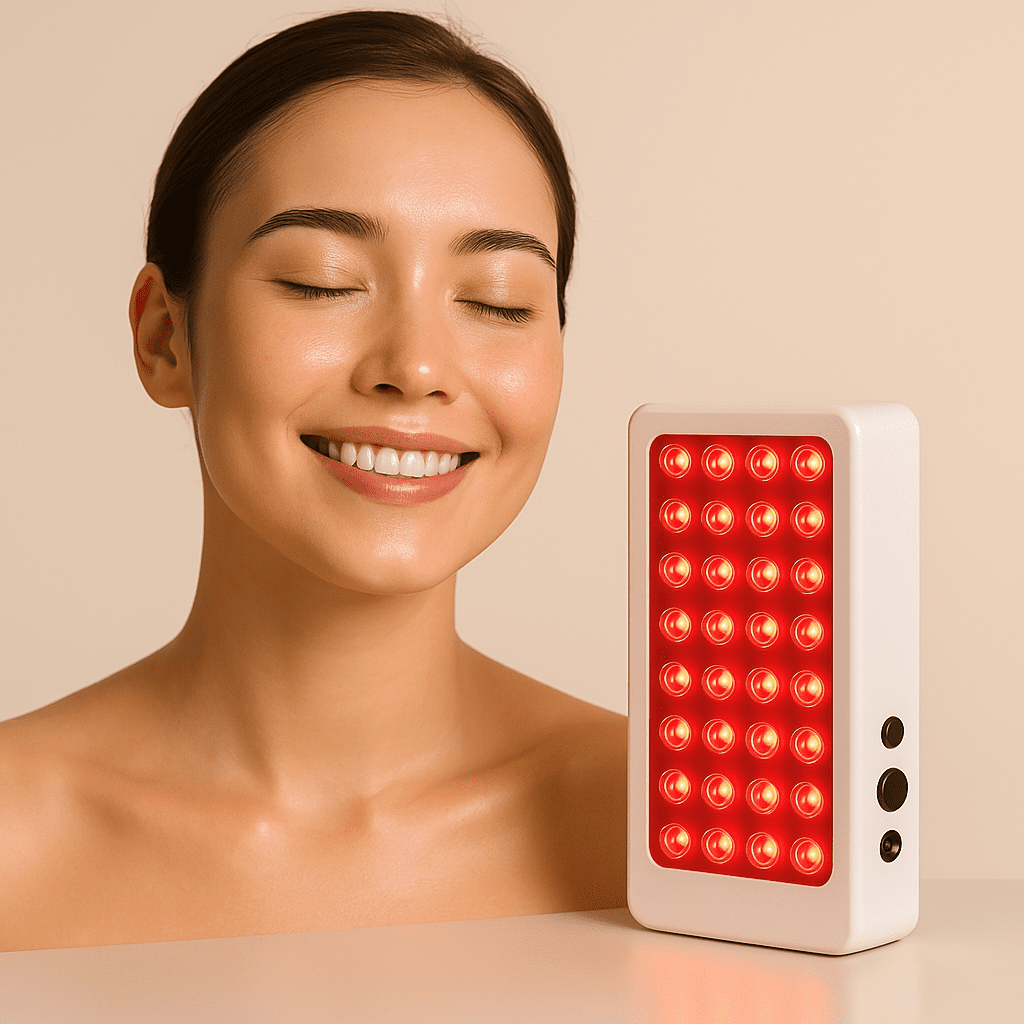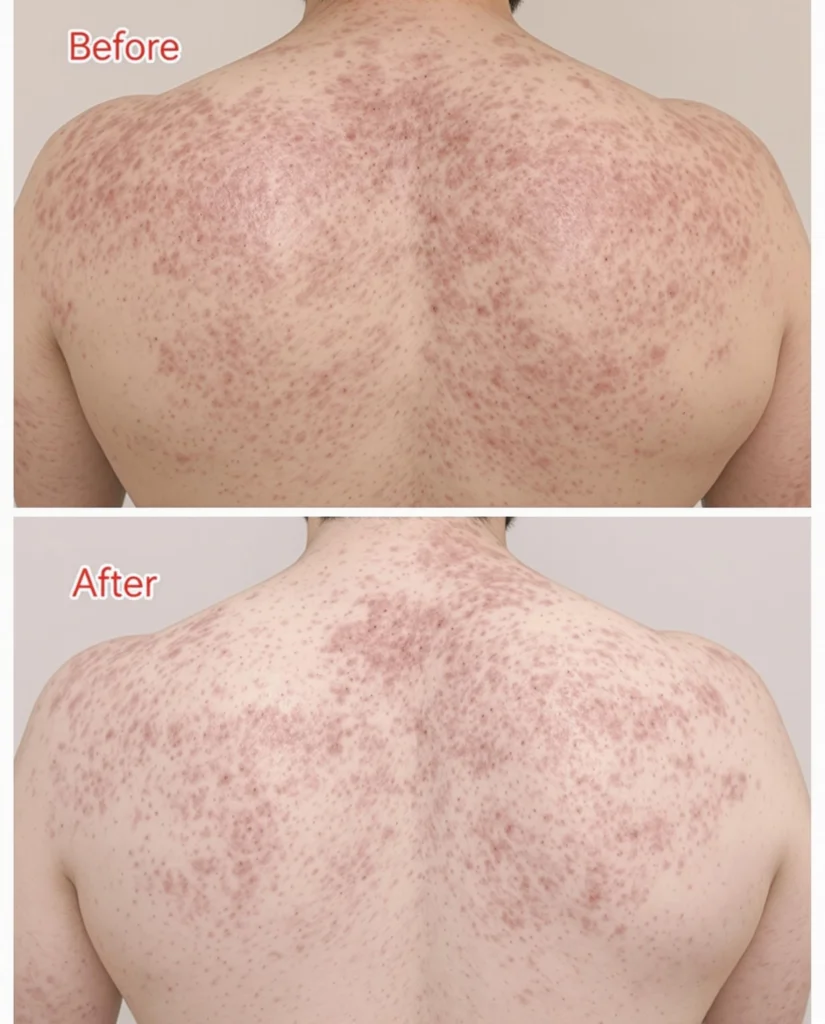Energizing Your Cells with Red and Near-Infrared Light
Why Mitochondrial Health Matters

Supporting mitochondrial health through light therapy may reduce fatigue and offer a host of other benefits. Read on to discover how to keep your mitochondrial function in tip-top condition — and why your cells love red light.
Mitochondria are the power plants of your cells. They produce adenosine triphosphate (ATP), the molecule that fuels nearly every cellular process in your body. From muscle contraction to brain function to immune response, ATP is essential.
As we age or experience stress, mitochondrial function can decline. This contributes to fatigue, slower healing, inflammation, and age-related disease. That’s where red and near-infrared (NIR) light come in.
Better mitochondrial health is linked to improved energy and recovery.
How Red and NIR Light Interact with Mitochondria
Red and NIR light (typically in the 600–900nm range) penetrate deep into tissues and are absorbed by photoreceptors within the mitochondria, especially a key enzyme called cytochrome c oxidase (CCO).
When this enzyme absorbs photons, several things happen:
- Nitric oxide (NO), which may be bound to CCO and inhibiting it, is released
- CCO activity increases
- Oxygen consumption and ATP production rise
In other words: red light tells your mitochondria to get back to work.
Several studies suggest that red and near Infra-red light can improve mitochondrial function
Key Mechanisms at Work

1. Cytochrome C Oxidase Activation
Photons from red/NIR light stimulate this mitochondrial enzyme, which is part of the electron transport chain.
2. Nitric Oxide Release
This increases vasodilation (blood flow) and removes NO from mitochondria, allowing CCO to work more efficiently.
3. Increased ATP Production
More energy = better performance, healing, and resilience.
4. Reduced Oxidative Stress
By improving mitochondrial function, cells produce fewer harmful free radicals and more antioxidants.
Health Benefits of Supporting Mitochondria with Light
Because mitochondria are essential to nearly every cell, the benefits are widespread:
- ✨ Increased energy and stamina
- 💪 Faster muscle recovery and better exercise tolerance
- 🧠 Improved cognitive clarity
- 🩸 Reduced inflammation and pain
- 💆 Healthier skin, faster wound healing
Some even describe a mild euphoria or uplifted mood after sessions.
Key Research Backing It Up
- A 2017 review in AIMS Biophysics concluded that red and NIR light improves mitochondrial function and reduces oxidative damage in both acute and chronic conditions.
- A 2021 study in Frontiers in Neuroscience found enhanced ATP production and reduced inflammation in brain cells exposed to red light.
- Animal and human studies repeatedly show benefits in muscle repair, brain health, and immune function.
Fun fact: NASA originally studied red light therapy to help astronauts maintain muscle and bone health in space.
🧪 Scientific Studies & Reviews
- Hamblin, M. R. (2017)
Mechanisms and mitochondrial redox signaling in photobiomodulation
AIMS Biophysics, 4(3), 337–361 - Salehpour, F., et al. (2021)
Transcranial Photobiomodulation Improves Cognitive Performance in Healthy Subjects
Frontiers in Neuroscience, 15: 664202 - Chung, H., et al. (2012)
The Nuts and Bolts of Low-level Laser (Light) Therapy
Annals of Biomedical Engineering, 40(2), 516–533 - Karu, T. I. (1999)
Primary and Secondary Mechanisms of Action of Visible to Near-IR Radiation on Cells
Journal of Photochemistry and Photobiology B: Biology, 49(1), 1–17 - Huang, Y. Y., Chen, A. C., Carroll, J. D., & Hamblin, M. R. (2009)
Biphasic dose response in low level light therapy
Dose-Response, 7(4), 358–383
Safe Use and Considerations
- Use FDA-cleared or CE-marked red/NIR devices
- Avoid looking directly into high-powered LEDs
- Follow time/distance guidance based on your device
- Don’t overdo it – more isn’t always better
Deep Dive Podcast
Ready to learn more? Listen to our Ai hosts break down the information in this article and the studies listed wthin.
Mitochondrial Function FAQ
Want to Dive Deeper?
Explore related articles:
And if you’re curious about natural support for inflammation, check out Cyactiv by Cerule
Recommended RLT Devices for home Use
Target Light 3.0 Handheld Portable Red Light Therapy
Price: £240
Discount code (15% off): REDLIGHTDISCO10
Boost Mitochondrial health and improve mitochondrial function. Low price, high spec device.

Disclosure: This is an affiliate link. If you make a purchase, I may earn a commission at no extra cost to you.
Advantage Red Light Therapy Wrap
Price: £297
Discount code (15% off): REDLIGHTDISCO10
Experience soothing, flexible red light therapy with the Advantage Red Light Therapy Wrap.

Red light doesn’t just feel good — it works on a cellular level. Share this article or explore more on red light and healing at RedLightTherapy.Rehab.





